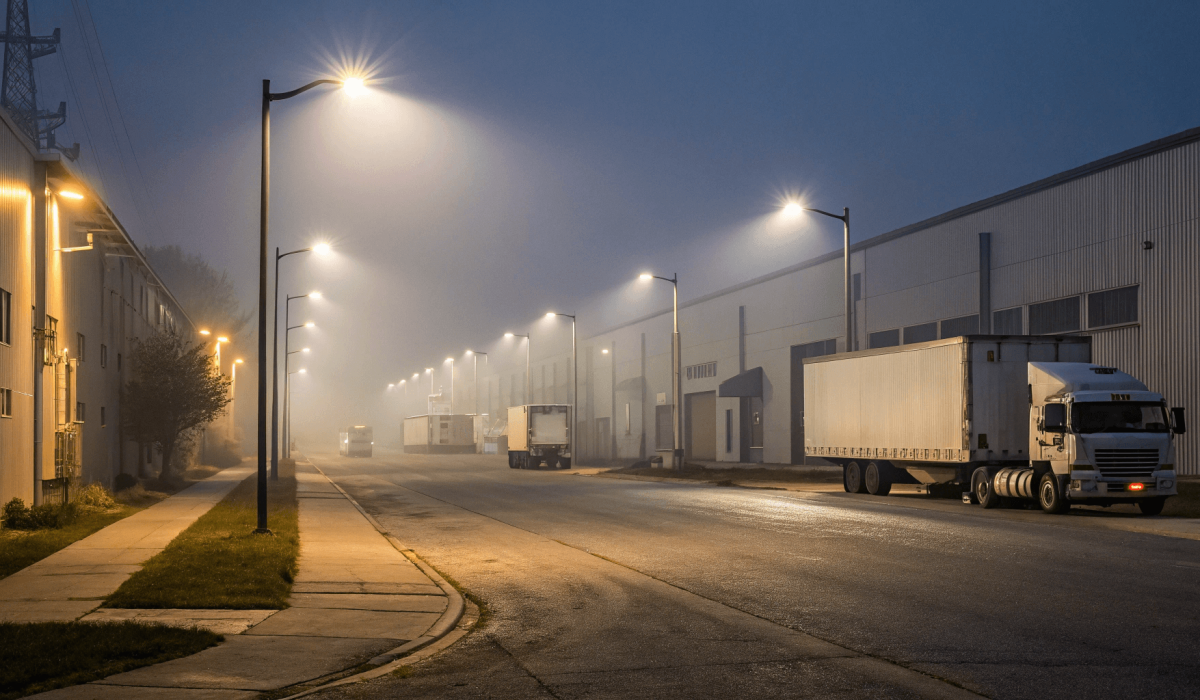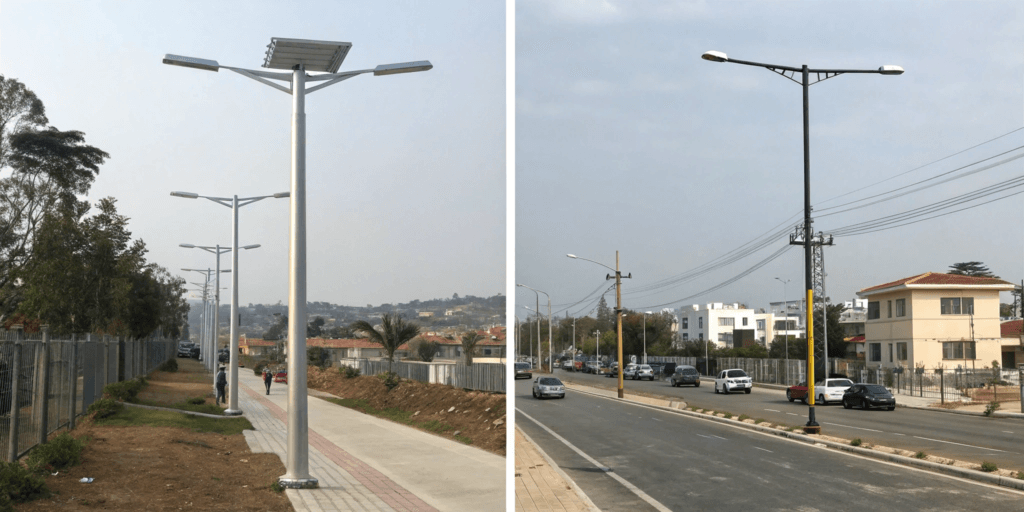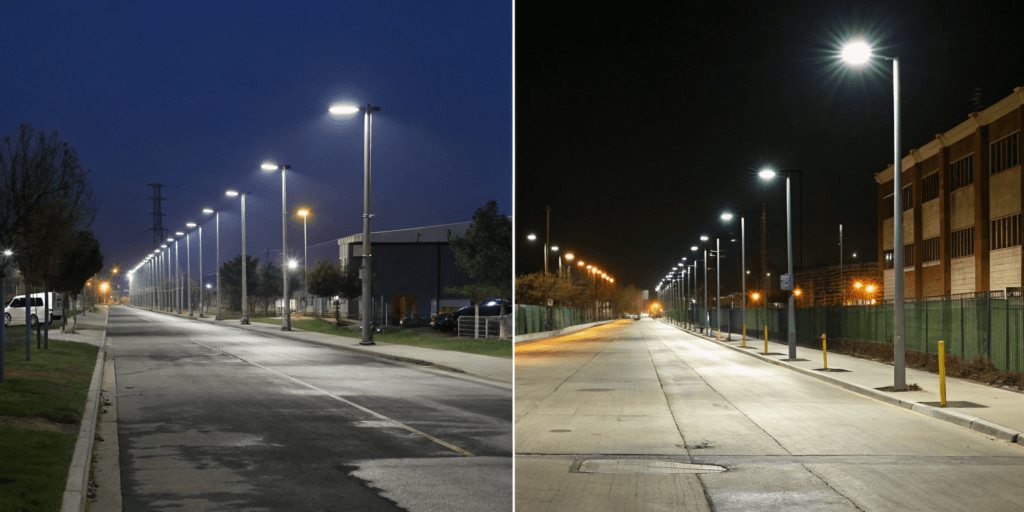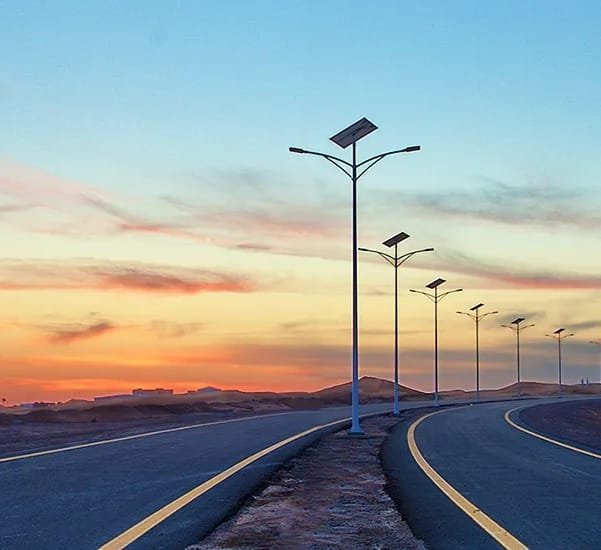Last year, while planning a lighting upgrade in western Uganda, one misjudged pole spec led to shadow gaps across an entire boulevard. It reminded us: choosing the right pole isn’t just technical—it’s tactical.
Pole height, material, spacing, and energy efficiency aren’t just specs—they’re the difference between a system that performs for years and one that fails early.
Here’s what we’ve learned from real deployments in Africa and Southeast Asia about choosing the right pole for your project.
1. What’s the Purpose of the Lighting—And Who Will It Serve?
Lighting is never one-size-fits-all. Before picking materials or sizes, ask: What are you solving for?
In Kampala’s busier intersections, poles need height and strength to support CCTV and long-arm LED heads. Meanwhile, in community parks, the same city uses lower composite poles to create warmth and limit glare.
Street lighting improves safety, sure—but is the need vehicular or pedestrian? Are you designing for functionality, aesthetics, or surveillance? These goals shape the pole spec.
And don’t ignore regulation: local governments often mandate pole spacing, paint type, or grounding resistance. For example, several West African cities require corrosion-rated poles in salt-air zones.
2. Know Your Material—and Your Environment
We’ve installed in rainforests, desert highways, and coastal zones. Each site demands its own pole logic.
Quick take from our engineers:
| Material | Real-World Notes | Best Use Case | Maintenance Load |
|---|---|---|---|
| Steel | Ultra-strong but needs galvanization near the sea | High-traffic roads | Medium to high |
| Aluminum | Rust-proof, less theft-prone | Coastal areas | Low |
| Fiberglass | Light, non-conductive, can look like wood | Parks or wet zones | Very low |
| Composite | Durable + decorative | Heritage or aesthetic districts | Low |
In Ghana, we switched from painted steel to aluminum near Tema Port after rust issues cropped up in under three years. Since then: zero failures.
3. Height and Spacing: Don’t Guess. Calculate.
The rule of thumb? Pole spacing = 2.5 to 3 × pole height. But don’t stop there.
For example: On a 30-foot road, we used 10m poles at 25m spacing—but added motion-sensing dimming to reduce energy during off-peak hours.
Pole height affects beam spread. Taller poles mean broader coverage but reduced ground intensity. And if you’re mounting not just lamps but also cameras, signage, or solar panels—check the wind load ratings.
Also, confirm that the light head’s beam angle matches your road width and pole height.
4. Smart Lighting Isn’t Optional Anymore
Energy costs in some East African cities have risen 18% in the last two years. We’ve seen cities cut bills by over 50% simply by upgrading to motion-dim LEDs.
We recommend:
- Use LEDs with adaptive dimming
- Install daylight sensors or motion triggers
- Consider hybrid poles (solar + grid) for remote zones
And yes, pole material matters too. Choose materials that minimize lifecycle emissions—like fiberglass or recycled aluminum.
5. Think in Lifespan, Not Just Budget
We’ve audited dozens of municipal lighting systems. The pattern? Cheap poles = expensive upkeep.
Painted steel may be cheap today—but will rust fast in tropical humidity. One coastal project in Senegal spent more repainting than their original pole cost after just six years.
Factor in:
- Material durability (galvanization adds upfront cost but saves long-term)
- LED longevity
- Maintenance cycles and labor cost in your region
Final Word from the Field
Street poles aren’t just supports for lights—they’re part of a city’s spine. Choose well, and you’ll get safety, efficiency, and durability for years.
💡 Want specs for your climate or budget? Let’s run a quick layout simulation — we’ll suggest the best pole-lamp pairing in under 24 hours.






